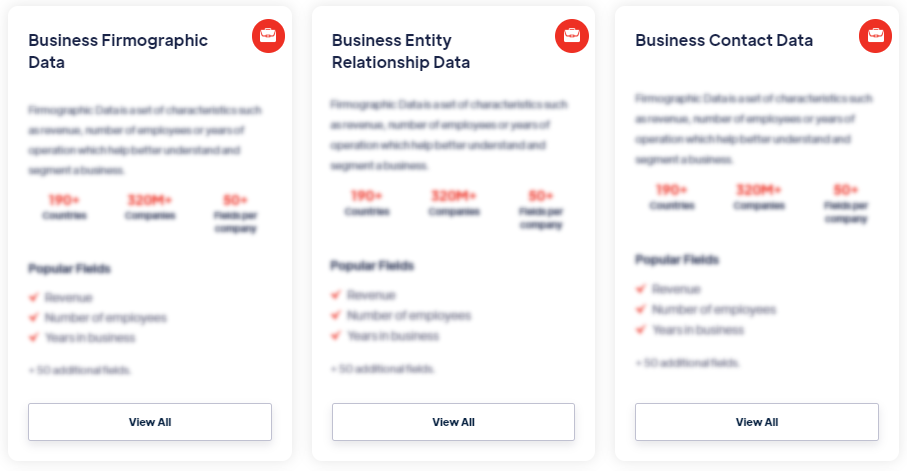Best
Land Use Data
Products
Land use data represents the distribution and classification of land based on its intended purpose or activity. It provides information about how land is utilized, such as the proportion of land dedicated to residential areas, agriculture, forests, urban development, infrastructure, and other land uses. Read more
Our Data Integrations


Request Data Sample for
Land Use Data

Browse the Data Marketplace

Frequently Asked Questions
1. What is Land Use Data?
Land use data
represents the distribution and classification of land based on
its intended purpose or activity. It provides information about
how land is utilized, such as the proportion of land dedicated
to residential areas, agriculture, forests, urban development,
infrastructure, and other land uses.
2. How is Land Use Data collected?
Land
use data is collected through various methods, including
satellite imagery, aerial photography, field surveys, and
administrative records. Satellite imagery and aerial photography
are commonly used to visually classify and identify different
land use types. Field surveys involve direct observations and
measurements on the ground. Administrative records, such as
zoning maps and land use plans, provide legal and official
designations of land use.
3. What does Land Use Data represent?
Land
use data represents the spatial distribution and categorization
of land based on the activities and functions taking place on
it. It describes the purpose for which the land is used, such as
residential, commercial, industrial, agricultural, or open
space. Land use data can also provide information on land cover,
vegetation, and natural features.
4. How is Land Use Data used?
Land use
data is used for urban planning, resource management,
environmental impact assessment, policy development, and
decision-making. It helps identify areas of urban growth, land
suitability for various purposes, land availability for
development, and potential conflicts between different land
uses. Land use data is also valuable for analyzing patterns of
urbanization, monitoring changes in land use over time, and
assessing the impact of human activities on the environment.
5. What are the benefits of Land Use Data?
Land use data provides valuable information for sustainable
land management and development. It supports efficient urban
planning by identifying areas for residential, commercial, and
industrial purposes, as well as open spaces for recreation and
conservation. Land use data helps optimize resource allocation,
protect valuable natural areas, promote balanced development,
and guide infrastructure planning. It also enables informed
decision-making for land use policies and regulations.
6. What are the challenges with Land Use Data?
Challenges with land use data include data accuracy,
consistency, and compatibility across different sources and
jurisdictions. Data collection methods and classifications may
vary, making it difficult to compare land use data from
different regions or time periods. The dynamic nature of land
use also poses challenges, as land use patterns can change
rapidly due to urbanization, population growth, and economic
factors.
7. How can Land Use Data be analyzed?
Land
use data can be analyzed using GIS (Geographic Information
System) tools and techniques. Spatial analysis allows for the
identification of patterns, trends, and relationships between
land use and other variables. Statistical analysis and modeling
can be used to assess the impacts of land use on the
environment, predict future land use changes, and evaluate
alternative land use scenarios.
